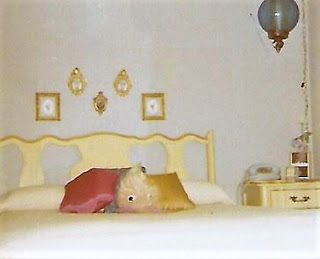In
1963, other than a date to the high school dance and a LadyBug shirt dress, what more could a teen girl
want? Not that I recall asking for a Princess phone; my parents, however, gave
me a powder blue one for Christmas, with a rotary dial that did double-duty as a night light.
 Without a separate line, of course, my
Princess phone operated as an additional telephone set on one home line. Same phone
number as our home phone, same line as the parents who would pick up the phone
and say “Hang up, now,” that phone hosted multiple viewing parties after it
finally was installed.
Without a separate line, of course, my
Princess phone operated as an additional telephone set on one home line. Same phone
number as our home phone, same line as the parents who would pick up the phone
and say “Hang up, now,” that phone hosted multiple viewing parties after it
finally was installed. Unlike today, however, we had no
call-waiting, no caller ID. We had to be respectful of time limits because the
operator could break in to say, “There’s an emergency call for this number.” We
would be in deep, dark trouble for playing pranks using the phone, like calling
a random number to ask “Is your refrigerator running?” A simple thumb and
forefinger could press a lever to release the plug from the jack and the phone
could disappear as quickly as it appeared.
Unlike today, however, we had no
call-waiting, no caller ID. We had to be respectful of time limits because the
operator could break in to say, “There’s an emergency call for this number.” We
would be in deep, dark trouble for playing pranks using the phone, like calling
a random number to ask “Is your refrigerator running?” A simple thumb and
forefinger could press a lever to release the plug from the jack and the phone
could disappear as quickly as it appeared.
The only question my brother asked
as I left for college: “Can I have your phone?” He did not care that it was a
pretty, blue Princess. I did; I declined his request.
I loved that Princess phone and I
used it until I married, leaving my parents’ home for my own.